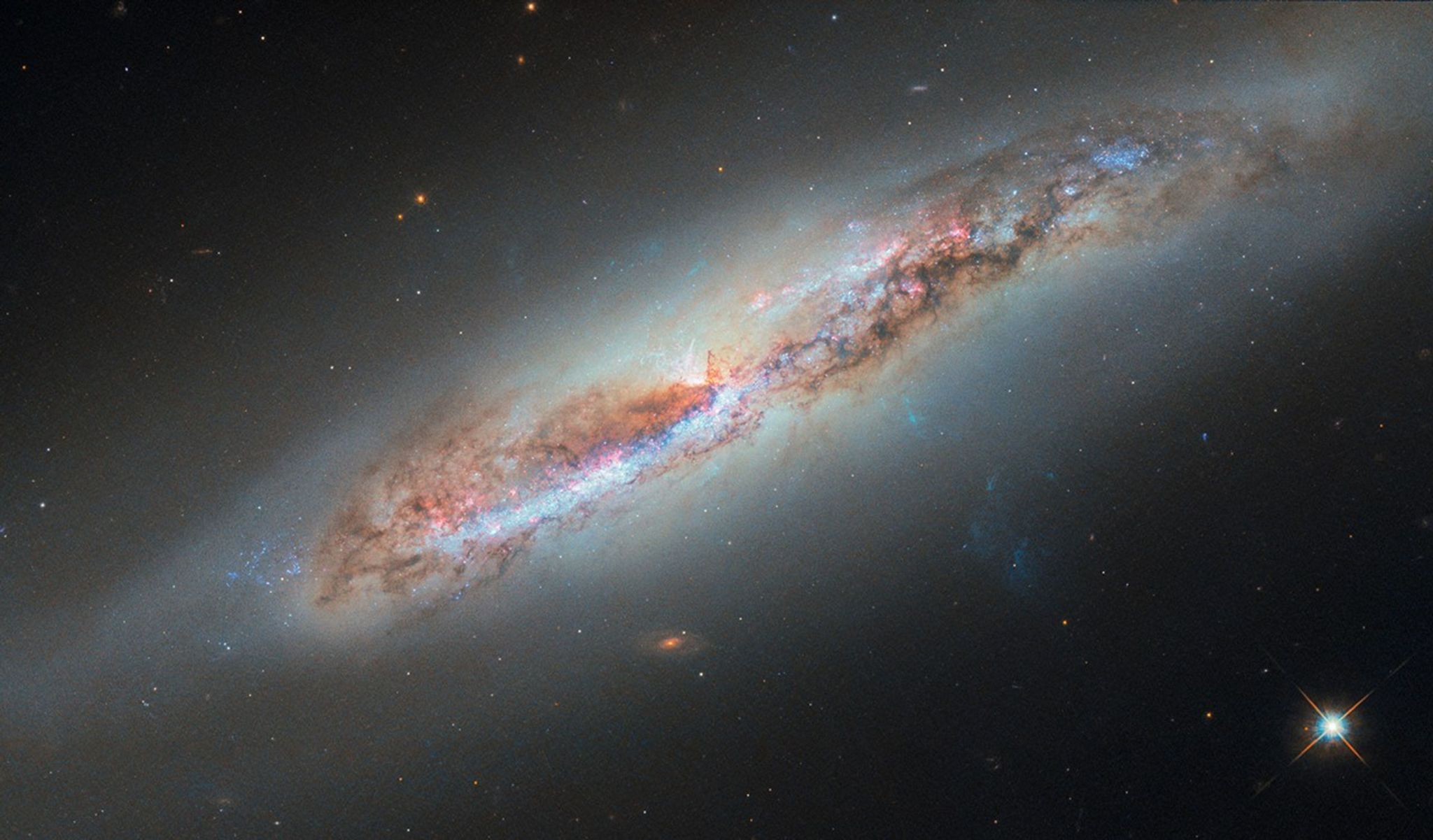As it soared past Saturn's large moon Titan recently, NASA's Cassini spacecraft caught a glimpse of bright sunlight reflecting off hydrocarbon seas.
from News and Features - NASA's Jet Propulsion Laboratory http://ift.tt/1tmTemn
via IFTTT
As it soared past Saturn's large moon Titan recently, NASA's Cassini spacecraft caught a glimpse of bright sunlight reflecting off hydrocarbon seas.
NASA is developing a new instrument that can detect heat and water stress in plants.
Rosetta's comet destination is beginning to show a clearly visible increase in activity.
NASA scientists have identified an unexpected ice cloud on Saturn's moon Titan that is similar to exotic clouds found far above Earth's poles.
The imaging spectrometer on NASA's Mars Reconnaissance Orbiter has provided an image of the coma surrounding a comet that flew near Mars this week.
NASA's MAVEN spacecraft obtained this ultraviolet image of hydrogen surrounding comet Siding Spring on Oct. 17, 2014, two days before the comet's closest approach to Mars.
NASA's Mars Exploration Rover Opportunity caught an image of a celestial visitor -- comet C/2013 A1 Siding Spring -- as the comet approached near to Mars on Oct. 19, 2014.
All three NASA orbiters around Mars confirmed their healthy status Sunday after each took shelter behind Mars during a period of risk from dust released by a passing comet.
The longest-lived robot ever sent to Mars came through its latest challenge in good health, reporting home on schedule after sheltering behind Mars from possible comet dust.
NASA's newest orbiter at Mars, MAVEN, took precautions to avoid harm from a dust-spewing comet that flew near Mars today and is studying the flyby's effects on the Red Planet's atmosphere.
NASA's Mars Reconnaissance Orbiter, which has sent home more data about Mars than all other missions combined, is also now providing data about a comet that buzzed The Red Planet on October 19.
A new study suggests the cratered surface of Saturn's icy moon Mimas indicates the moon's frozen core is shaped something like a football, or the moon has a liquid water ocean.
NASA's decade-old Mars Exploration Rover Opportunity is working near the base of a steep-sloped hill called "Wdowiak Ridge," shown in a dramatic new panorama from the rover.
New analysis indicates that during a 2005 flyby, NASA's Cassini spacecraft was zapped by a beam of electrons coming from the surface of Saturn's moon Hyperion.
An annotated mosaic from the Rosetta spacecraft shows "Site J," the primary landing site on comet 67P/Churyumov-Gerasimenko for the mission's Philae lander.
A NASA spacecraft designed to track Earth's water in one of its most important, but least recognized, forms -- soil moisture -- has arrived at its California launch site.
NASA's RapidScat gives forecasters a new eye on winds far out to sea and will help researchers understand why a breeze over the ocean sometimes builds into a hurricane.
What makes one rose bush blossom with flowers, while another remains barren? Astronomers ask a similar question of galaxies.
A composite image from a camera on the Rosetta mission's Philae comet lander shows a solar array, with comet 67P/Churyumov-Gerasimenko in the background.
NASA's MAVEN spacecraft orbiting Mars sees a solar-particle storm, gets ultraviolet images of tenuous oxygen, hydrogen and carbon coronas, and yields a map of variable ozone.
NASA's extensive fleet of science assets, particularly those orbiting and roving Mars, have front row seats to image and study a once-in-a-lifetime comet flyby on Sunday, Oct. 19.
One small "hot spot" in the U.S. Southwest is responsible for producing the largest concentration of the greenhouse gas methane seen over the United States.
NASA engineers are bound and determined to destroy a perfectly good parachute this week during the latest test for the agency's Low-Density Supersonic Decelerator project.
Astronomers have found a pulsating, dead star beaming with the energy of about 10 million suns. This is the brightest pulsar - a dense stellar remnant left over from a supernova explosion - ever recorded.
NASA will host a briefing on Thursday, Oct. 9, to outline the space and Earth-based assets that will image and study a comet from relatively close range to Mars on Oct. 19.
NASA will host a news teleconference at 10 a.m. PDT (1 p.m. EDT) Wednesday, Oct. 8, to announce new findings from its Nuclear Spectroscopic Telescope Array (NuSTAR) mission.
Earth's deep ocean has not warmed measurably since 2005, finds a new NASA study, leaving unsolved the mystery of why global warming appears to have slowed in recent years.
JPL is participating in AxS 2014, an arts and sciences celebration in Pasadena, California, which includes an interactive comet sculpture on display through Oct. 5.
An image taken by the ESA Rosetta spacecraft shows jets of dust and gas escaping from the nucleus of comet 67P/Churyumov-Gerasimenko.
In collaboration with JPL, Pacific Gas and Electric Company announced that it is testing state-of-the-art technology adapted from NASA's Mars rover program.
Using data from NASA's Gravity Recovery and Interior Laboratory (GRAIL), mission scientists have solved a lunar mystery almost as old as the moon itself.
NASA is inviting people around the globe to step outside during Earth Science Week, Oct. 12-18, observe the sky and share their observations as citizen scientists.
NASA's Jet Propulsion Laboratory in Pasadena, California, opens its doors to the public at its Open House on Saturday, October 11, and Sunday, October 12, from 9 a.m. to 4 p.m.
Scientists analyzing data from NASA's Cassini mission have found a giant, toxic cloud hovering over the south pole of Titan, after the atmosphere there cooled dramatically.
NASA and the Indian Space Research Organisation signed agreements to launch a joint space mission to observe Earth and establish a pathway for joint Mars exploration missions.
This NASA/ESA Hubble Space Telescope image features the galaxy NGC 4388, a member of the Virgo galaxy cluster. ESA/Hubble & NASA, ...
